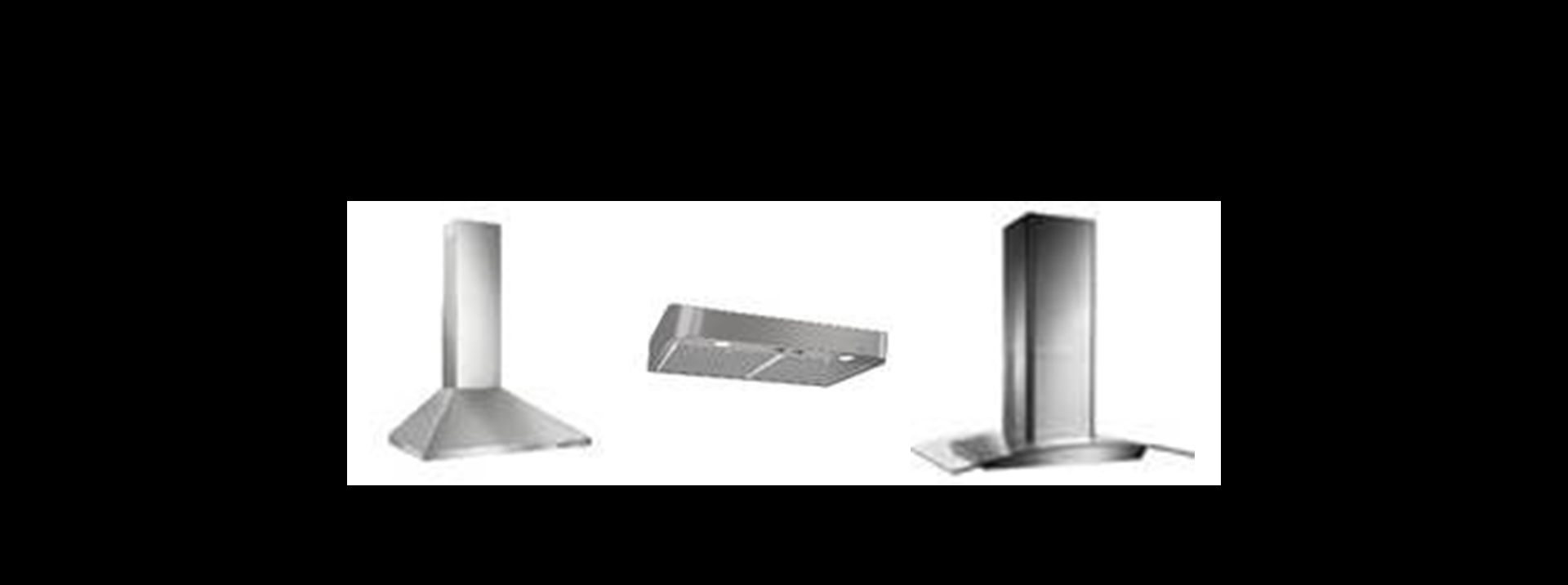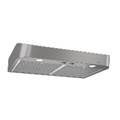
What to Look for in a Range Hood
Range hoods improve the functionality and the value of a kitchen. They remove airborne grease, fumes, smoke, odors, heat, and steam from the air by evacuation of the air and filtration. There are a few types of range hoods, so keep these attributes in mind:
- Chimney Hoods – chimney hoods mount on walls or ceilings, and most models are powerful and large. They work well over stovetops.

- Undercabinet Hoods – if you have a small kitchen, under-cabinet hoods work the best. Because they mount directly under cabinets, you do not have to modify your cabinetry for them to work. These hoods are stylish and designed to work in most kitchens.

- Island Hoods – designed for kitchens with islands, these hoods hang directly from the ceiling. In terms of performance, they are among the best and they ventilate well. They wick odors efficiently and have bright lights that illuminate the work area.

Style: There are two broad groups of range hoods – ducted and non-ducted. Ducted hoods have exhaust ducts that efficiently remove irritants from homes. Non-ducted range hoods do not require ducts. Instead, they use replaceable filters that trap irritants from the air before re-circulation.
Power: High power range hoods generate air movements to remove odors and other irritants from kitchens. If you do a lot of cooking at home, they are the best models to use. If you primarily cook small meals, a low power range hood is ideal. Most models have power efficient systems.
Features: Always check the features of your preferred range hood before buying. Does it have an automated shut off feature, for instance? Turning a hood on and off manually as you cook is often a frustrating affair. You should also check its lighting. LED bulbs are brighter and they are also cooler and last longer. Clear indicator lights, speed sensors, and heat sensors eliminate the guesswork.
Makeup Air: Today’s homes are built to be tighter and more energy efficient, which limits the amount of makeup air a home will permit. Makeup air helps keep the hood from creating a vacuum when you turn it on. When an exhaust fan operates without sufficient makeup air, the exhaust system will not work to its intended capacity, resulting in backdrafting of chimneys and appliance vents. Beginning in 2009, the International Residential Code (IRC) has required that makeup air be provided for kitchen hood exhaust systems with capacity of 400 CFM or greater.
Have questions? Give us a call at (781) 861-6400 or email us.
